Potrebujeme váš súhlas na využitie jednotlivých dát, aby sa vám okrem iného mohli ukazovať informácie týkajúce sa vašich záujmov. Súhlas udelíte kliknutím na tlačidlo „OK“.
ASTM D5391-14
Standard Test Method for Electrical Conductivity and Resistivity of a Flowing High Purity Water Sample (Withdrawn 2023)
Automaticky preložený názov:
Štandardná skúšobná metóda pre elektrické vodivosti a merného odporu prúdiacej vode s vysokou čistotou Sample
NORMA vydaná dňa 1.2.2014
Informácie o norme:
Označenie normy: ASTM D5391-14
Poznámka: NEPLATNÁ
Dátum vydania normy: 1.2.2014
Kód tovaru: NS-30995
Počet strán: 8
Približná hmotnosť: 24 g (0.05 libier)
Krajina: Americká technická norma
Kategória: Technické normy ASTM
Kategórie - podobné normy:
Anotácia textu normy ASTM D5391-14 :
Keywords:
cation, conductivity, high purity water measurements, resistivity, specific conductance, specific resistance, ICS Number Code 13.060.60 (Examination of water for physical properties)
Doplňujúce informácie
| Significance and Use | ||||||||||||||||||||
|
5.1 Conductivity measurements are typically made on samples of moderate to high ionic strength where contamination of open samples in routine laboratory handling is negligible. Under those conditions, standard temperature compensation using coefficients of 1 to 3 % of reading per degree Celsius over wide concentration ranges is appropriate. In contrast, this test method requires special considerations to reduce trace contamination and accommodates the high and variable temperature coefficients of pure water samples that can range as high as 7 % of reading per degree Celsius. In addition, measuring instrument design performance must be proven under high purity conditions. 5.2 This test method is applicable for detecting trace amounts of ionic contaminants in water. It is the primary means of monitoring the performance of demineralization and other high purity water treatment operations. It is also used to detect ionic contamination in boiler waters, microelectronics rinse waters, pharmaceutical process waters, etc., as well as to monitor and control the level of boiler and power plant cycle chemistry treatment chemicals. This test method supplements the basic measurement requirements for Test Methods D1125, D2186, and D4519. 5.3 At very low levels of alkaline contamination, for example, 0–1 μg/L NaOH, conductivity is suppressed, and can actually be slightly below the theoretical value for pure water. 1.1 This test method covers the determination of electrical conductivity and resistivity of high purity water samples below 10 μS/cm (above 0.1 Mohm-cm). It is applicable to both continuous and periodic measurements but in all cases, the water must be flowing in order to provide representative sampling. Static grab sampling cannot be used for such high purity water. Continuous measurements are made directly in pure water process lines, or in side stream sample lines to enable measurements on high temperature or high pressure samples, or both. 1.2 The values stated in SI units are to be regarded as standard. No other units of measurement are included in this standard. 1.3 This standard does not purport to address all of the safety concerns, if any, associated with its use. It is the responsibility of the user of this standard to establish appropriate safety and health practices and determine the applicability of regulatory limitations prior to use. |
||||||||||||||||||||
| 2. Referenced Documents | ||||||||||||||||||||
|
Podobné normy:
Historická
15.6.2013
Historická
1.6.2013
Historická
1.2.2009
Historická
1.5.2011
Historická
15.3.2014
Historická
15.5.2011
Odporúčame:
Aktualizácia technických noriem
Chcete mať istotu, že používate len platné technické normy?
Ponúkame Vám riešenie, ktoré Vám zaistí mesačný prehľad o aktuálnosti noriem, ktoré používate.
Chcete vedieť viac informácií ? Pozrite sa na túto stránku.



 ASTM D5811-08(2013)..
ASTM D5811-08(2013)..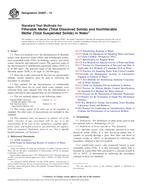 ASTM D5907-13
ASTM D5907-13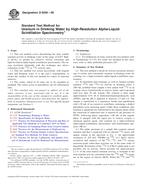 ASTM D6239-09
ASTM D6239-09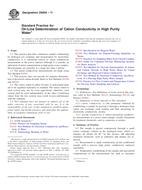 ASTM D6504-11
ASTM D6504-11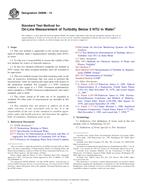 ASTM D6698-14
ASTM D6698-14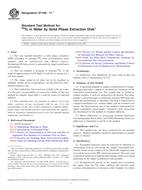 ASTM D7168-11e1
ASTM D7168-11e1
 Cookies
Cookies
